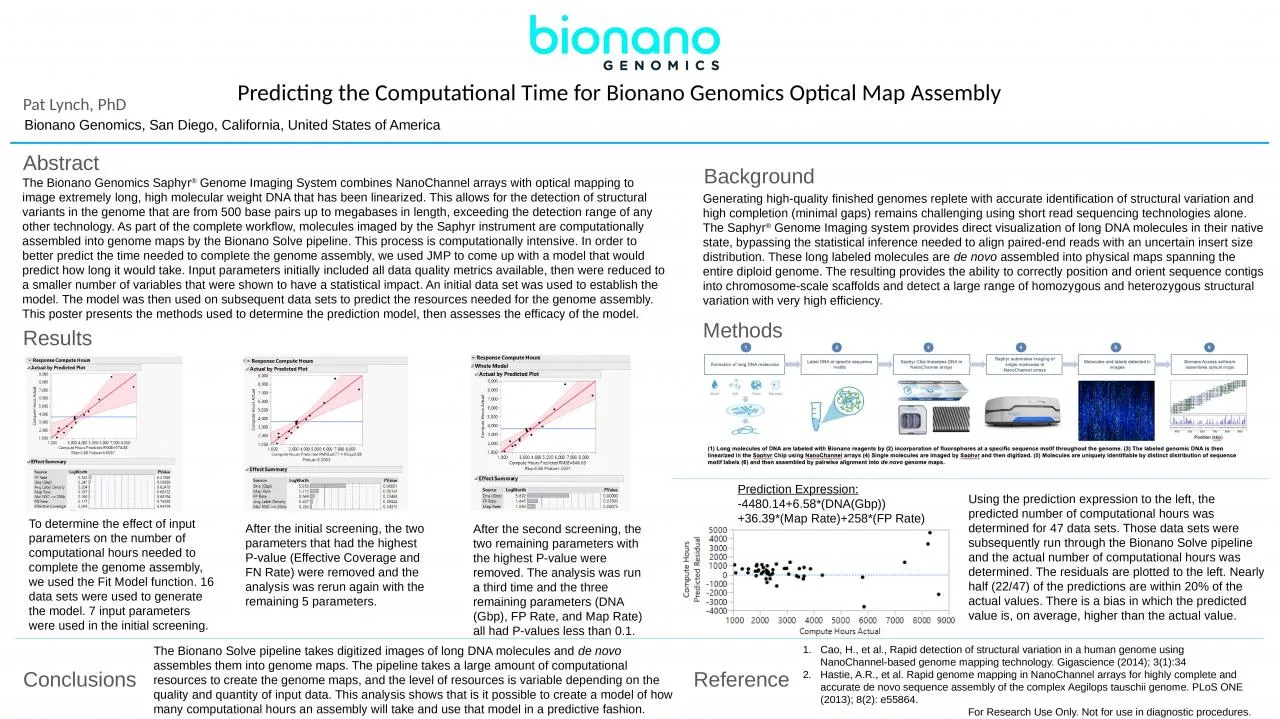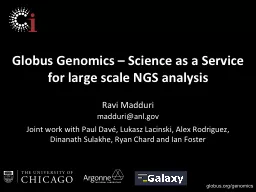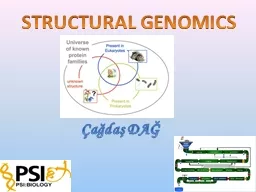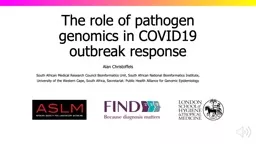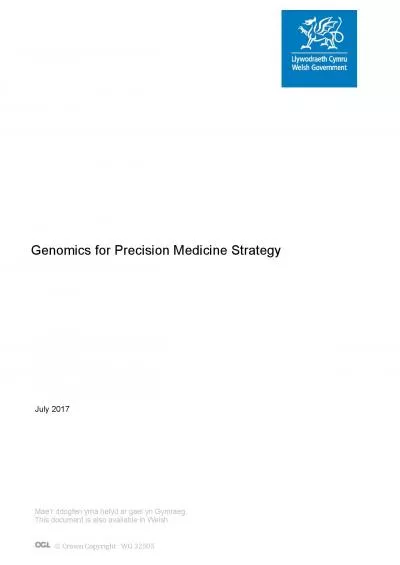PPT-Predicting the Computational Time for Bionano Genomics Optical Map Assembly
Author : willow | Published Date : 2024-01-03
Bionano Genomics San Diego California United States of America Abstract Pat Lynch PhD Background Generating highquality finished genomes replete with accurate identification
Presentation Embed Code
Download Presentation
Download Presentation The PPT/PDF document "Predicting the Computational Time for Bi..." is the property of its rightful owner. Permission is granted to download and print the materials on this website for personal, non-commercial use only, and to display it on your personal computer provided you do not modify the materials and that you retain all copyright notices contained in the materials. By downloading content from our website, you accept the terms of this agreement.
Predicting the Computational Time for Bionano Genomics Optical Map Assembly: Transcript
Download Rules Of Document
"Predicting the Computational Time for Bionano Genomics Optical Map Assembly"The content belongs to its owner. You may download and print it for personal use, without modification, and keep all copyright notices. By downloading, you agree to these terms.
Related Documents

